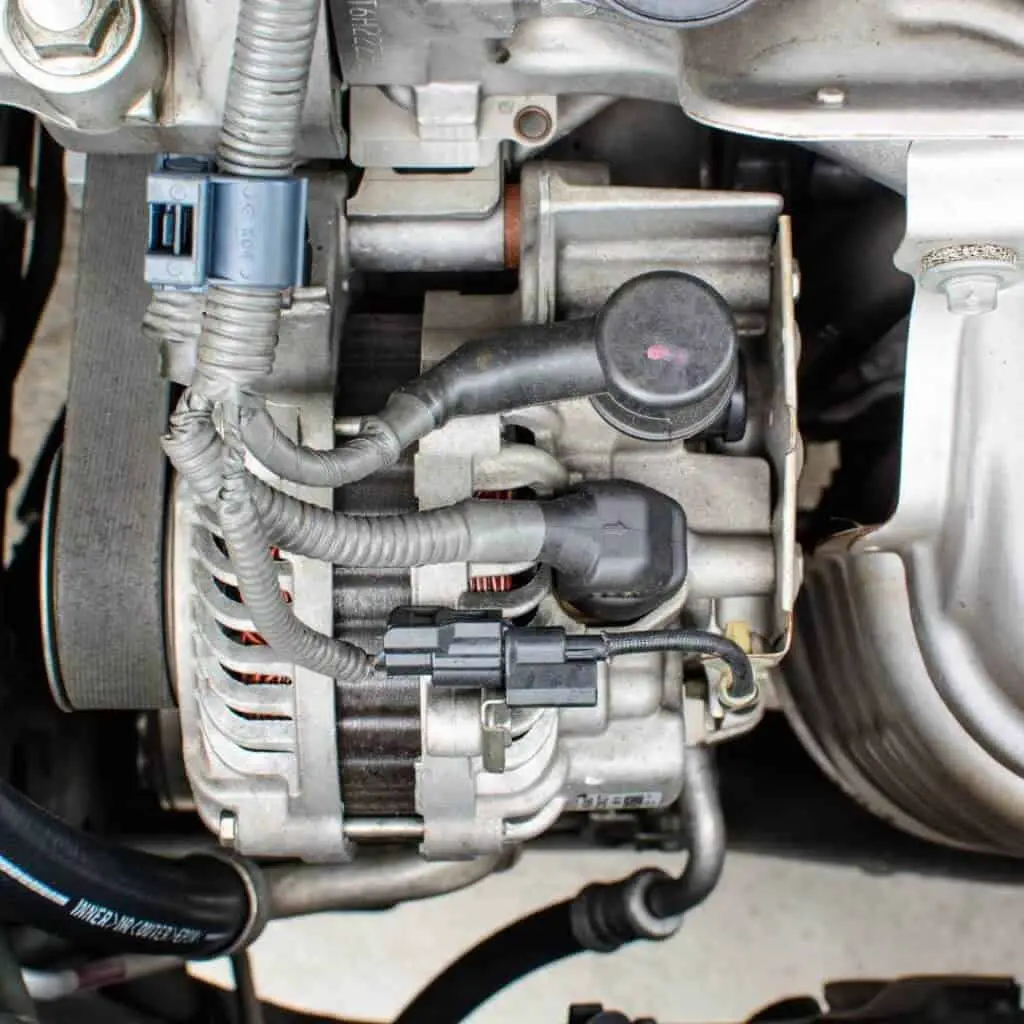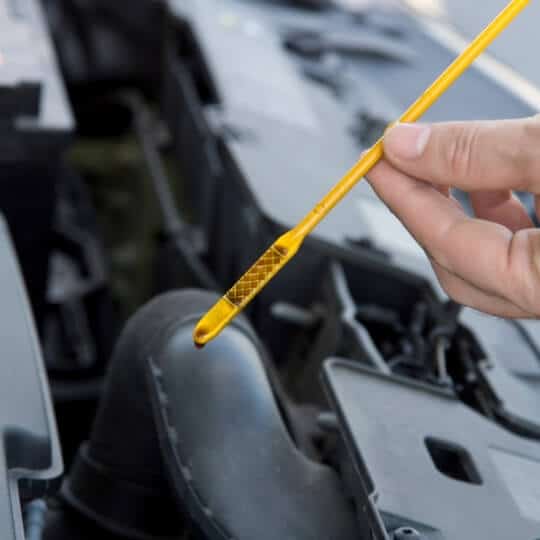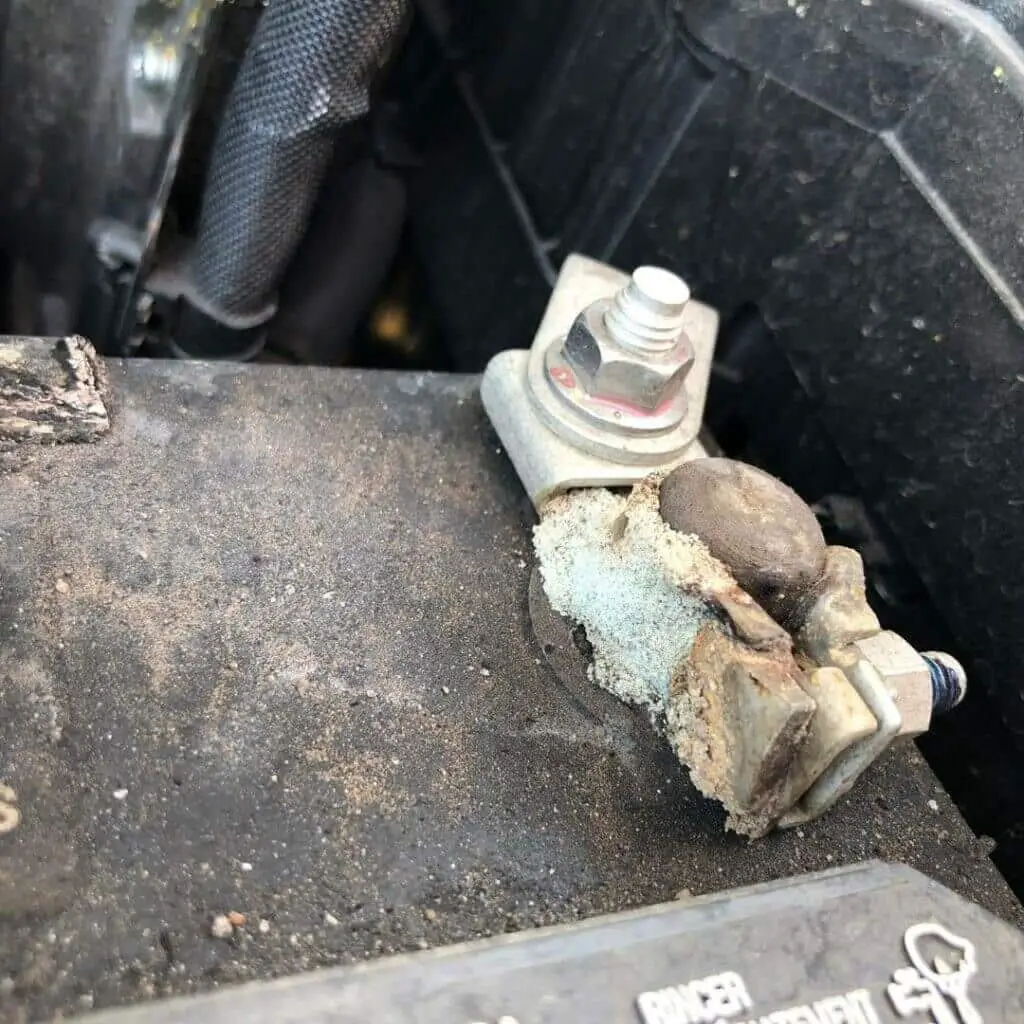Did you come across the “Battery Charge Fault Stop The Vehicle” message on your vehicle?
After seeing, this it’s obvious that you don’t know if you should continue driving or not. Do you have a flat battery or a bad alternator?
Usually, the warning light will be on when the car ignition is on but goes off as soon as the engine is started. This indicator staying on means there is an issue with the charging system.
If this error message comes on whilst you are driving, your battery is no longer charged by the alternator and is running only on its charge. In simpler terms, your car is only running on battery power that will eventually run out, bringing your vehicle to a stop.
Battery Charge Fault Stop the Vehicle
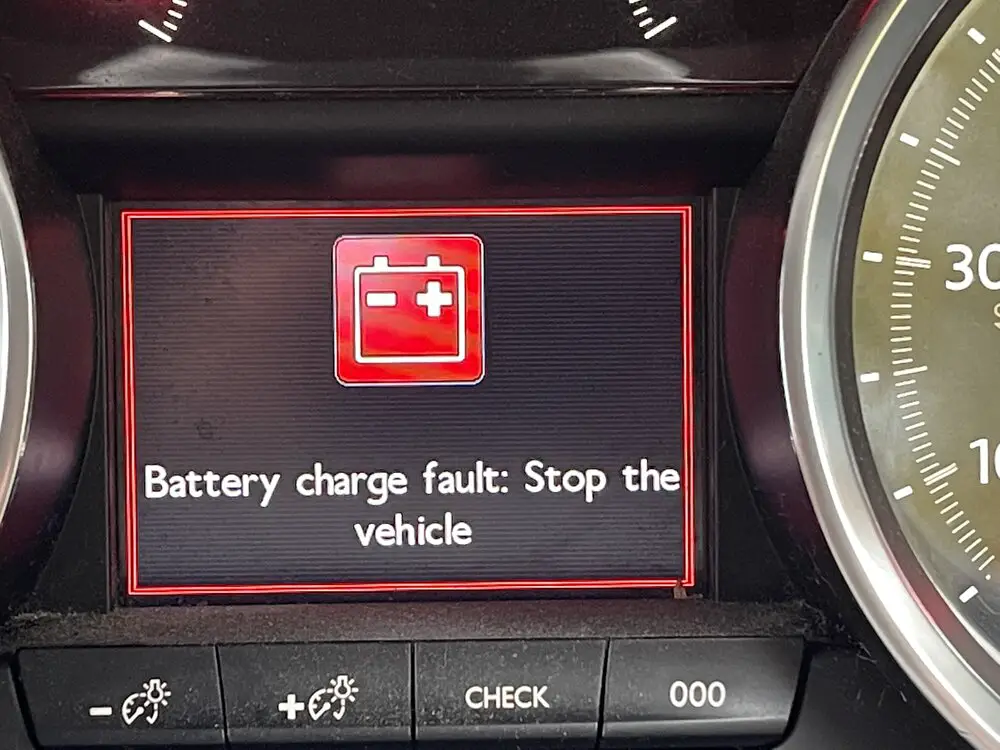
Unfortunately, there isn’t one answer as to why the battery charge fault indicator comes on. The most common reasons are a faulty alternator and damaged batteries or cables. Other reasons include broken alternator belts and faulty car computers.
- Faulty Alternator
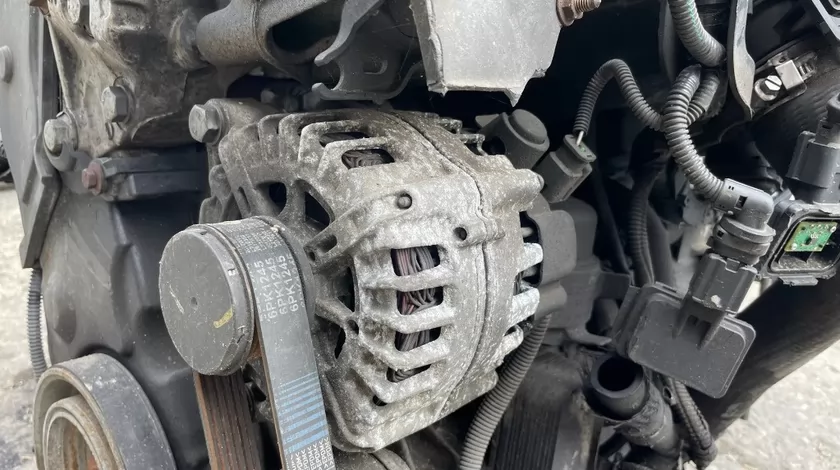
It’s not so hard to spot an alternator. On Peugeot vehicles, you can find it on the front left side of the engine.
As you may already know, alternator needs to charge your battery while engine is running.[1]
The alternator powers most of the car’s electronic components including headlights, electric steering, power windows, heated seats, dashboard instruments, and radio.
If the alternator becomes faulty and stops generating electricity, the entire electrical demands of the vehicle will shift to the battery. This drains out the battery quickly.
Alternators can typically last the lifetime of your vehicle, but that is not always the case. General wear and tear, heat damage, overuse, exposure to moisture, faulty parts or frayed wires can put your alternator out of commission before your car heads to the scrap yard.
Alternators can fail at any time, but generally, they last over 100k miles.
You can drive your vehicle with a bad alternator but only for a short distance. The battery charge will quickly go down, and when it gets too low, the engine will shut down.
A professional will need to run diagnostics on your vehicle since the warning light does not directly say that the alternator is the problem. In a weak charging system, the dashboard lights and headlights will dim at idle but become brighter when the engine is revved.
- Damaged Battery or Cables
This is probably the most common cause of the battery charge fault. Over time, batteries can get damaged, the terminals become corroded, or the cables get dislodged or damaged. If this happens, the battery will no longer be able to hold the charge from the alternator and gradually lose power over time. [2]
Driving habits are the most likely culprits of a battery malfunction rather than a factory malfunction. Heavy accessory power when driving short distances prevents a periodic full saturated charge that is vital for the longevity of a lead acid battery.
You can check the battery for signs of damage or corrosion, but you’ll have to be extremely careful.
Wear eye protection and other safety gear to prevent burns. Battery corrosion is fairly common, especially if the battery is over two years old. Corrosion occurs when the battery acid reacts with the metal terminals which can lead to loss of contact and reduced current flow.
Some signs of a damaged car battery include terminals showing signs of being hammered or twisted down the cover, side terminals showing signs of over-torquing, battery container showing signs of stress, damage or high temperature, and ends of the battery pushing out indicating end plate growth.
We would also highly recommend you have your battery checked by a professional if you suspect damage to it.
If rodents chewed up the battery cables, it can also cause an error message to come up. Look for any signs of bite marks in the engine compartments and examine all the battery and alternator cables. If any cable has been damaged, replace it with a new one.
Related: Bad Alternator vs Bad Battery
- Broken Alternator Belt
The alternator belt, also known as a serpentine belt or drive belt, transfers the power from the engine to other components like the alternator and the AC compressor.
If this belt becomes loose or damaged, or if the alternator pulley develops a fault, it can cause the belt to slip. This can cause the alternator to spin slower or inconsistently, reducing electricity production.
Examine beneath the hood, verify the presence of the alternator belt. The alternator is toggled on and off, which means that even if the belt is missing, the indicator might not illuminate immediately.
This is perhaps the most serious cause of a battery charge fault. This is because the belt not only drives the alternator but also the engine coolant pump and power steering system.
If your engine warning light comes on and you notice your engine’s temperature increasing or your car becomes much harder to steer, you may have an issue with the alternator belt. Other symptoms include squealing noise from the engine compartment and cracks on the ribbed part of the belt.
Alternator belt problems are typically caused by the following: exposure to heat and friction over time, a faulty belt tensioner, misalignment of a pulley or defective bearings in the tensioner.
Premature failure can occur from uneven drive belt wear which happens when the alternator belt is misaligned. [3]
If this happens to be the case, it’s highly recommended that you stop your car as soon as possible and call a mechanic. If you continue to drive in this condition, you could cause some serious damage to your car’s engine.
- Faulty Computer System
Vehicles are equipped with a computer also known as Engine Control Unit (ECU) that controls major functions. Malfunctioning in a car computer is recognized by many symptoms. These include stalling and misfiring, apparent loss of ignition pulse, increased mileage, electric burning smell, battery charge fault/check engine light or your car not starting.
The car computer is prone to threats that can cause it to function improperly. These include short-circuit, vibrations, temperature, corrosions, and irregular voltage.
Car computers are built-in, and fixing them is quite tricky. It will require professional assistance to diagnose and report the computer. [3]
How to Diagnose the Problem
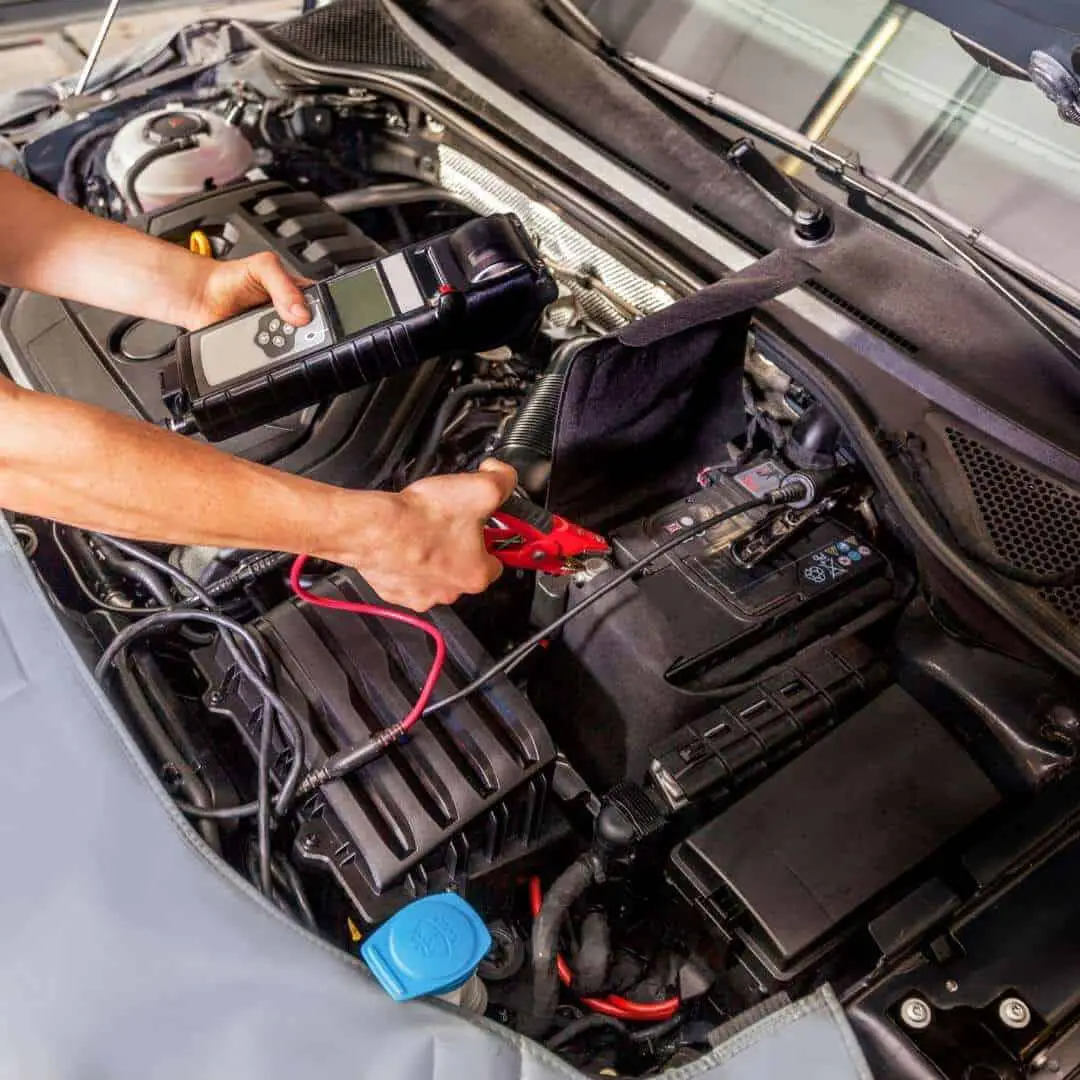
A battery charging system fault occurs more commonly due to a faulty alternator or a weak battery. There is a quick and easy test for this, using a voltage meter.
With the engine running (if you need to jump-start the vehicle, ensure to remove the jumper cables before testing), take a voltage reading at the battery terminals. If the voltage is not between 13.2-14.4v or fluctuates in and out of these values, the alternator is the most likely culprit.
If the alternator passes this test, turn off the engine and wait for fifteen minutes. Take another reading at the battery terminals with the engine off. If the voltage is less than 12v, the battery may have a “bad cell” and is not accepting the alternator’s charge.
Stores like Autozones can examine if your battery voltage is right for free. You just need to call them before and ask for any possible free appointment.
Before that, make sure that the battery cables are tight. They need to have a good connection and no corrosion on battery terminals.
Related: O’reillys vs Autozone Battery
Conclusion
As you can see, if the battery charge fault, stop the vehicle indicator comes on and stays on, it could be a sign of something simple or something that can potentially cause very serious damage to your car’s engine.
The best solution to this error message is to call a professional to have your car looked at.
Read Next: Can A Week Alternator Cause Bad Engine Performance

